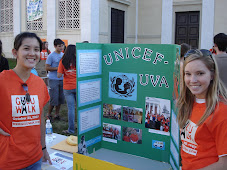Can Google Earth save the world?
The U.N. High Commissioner for Refugees announced a new partnership with the search engine this week. The goal: To use Google's globe-mapping software to illustrate the plight of parts of the planet's population.
Google Earth, a free, virtual-globe program from the search engine company, lets users zoom in on locations around the planet. Users can also use special programs known as layers, which organizations can build to incorporate video, text or other interactive features.
Under an outreach program, Google has been populating its virtual globe with socially minded projects from such organizations as Greenpeace, the U.S. Holocaust Memorial Museum and UNICEF. Six such layers have been launched in the past two weeks.
Click on the United Nations' "visit a camp" button in Google Earth, for example, and an online depiction of the globe spins and zeroes in on a satellite view of a refugee camp in Chad. There, visitors learn about the refugees who have fled to that country from western Sudan's Darfur region. Click on a button and users can find out how much money it costs to install, say, a new water source at the camp. Click again and users can donate that amount.
"The great thing about Google Earth is it gives you that ability to be there," said Tim Irwin, a spokesman for the U.N. refugee organization. "We're hoping to take something that might be a little abstract for some people and make it very real."
Rebecca Moore, manager of Google Earth Outreach, said she is hoping the software can be used by organizations on a larger scale. "This sort of immersive experience can lead to greater understanding, greater compassion and a desire to help," she said.
The U.S. Holocaust Memorial Museum launched "World is Witness," a layer that traces a recent trip to Rwanda to learn about the 1994 genocide there.
Last year, the museum was the first nonprofit organization to launch a Google Earth layer. The museum credited the program for increasing traffic to its "How can I help" page from 2,500 visitors a month to more than 50,000.
"It has been hugely helpful in terms of our outreach efforts," said John Heffernan, director of the museum's Genocide Prevention Initiative.
http://www.washingtonpost.com/wp-dyn/content/article/2008/04/11/AR2008041103566.html?hpid=topnews

No comments:
Post a Comment